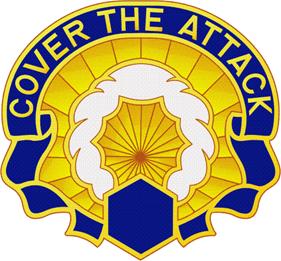457th Chemical Battalion, US Army: Difference between revisions
Knorrepoes (talk | contribs) m (Text replacement - "{{us}}" to "") |
Knorrepoes (talk | contribs) m (Text replacement - "The Coat of Arms was " to "The arms were ") |
||
| Line 21: | Line 21: | ||
The Hexagon alludes to a Benzene Ring. The Smoke Ring refers to the Battalion's Chemical Smoke Generator mission. It also allude to the Motto of the Battalion. The Rays radiating from the Hexagon signify the Battalion's mobility in providing overall protective cover. | The Hexagon alludes to a Benzene Ring. The Smoke Ring refers to the Battalion's Chemical Smoke Generator mission. It also allude to the Motto of the Battalion. The Rays radiating from the Hexagon signify the Battalion's mobility in providing overall protective cover. | ||
The | The arms were approved on 19 November 1996. The Distinctive Unit Insignia was approved on 24 February 1970. | ||
[[Literature]]: Images and Information from The Institute of Heraldry, US Army. | [[Literature]]: Images and Information from The Institute of Heraldry, US Army. | ||
Revision as of 05:30, 28 December 2022
457TH CHEMICAL BATTALION, US ARMY
| (Coat of Arms) |
(Distinctive Unit Insignia) |
Official blazon
Shield: Gyronny of sixteen Or and Tenné, ahexagon Azure charged with a wreath of smoke Argent.
Crest: That for the regiments and separate battalions of the Army Reserve: on a wreath Or and Tenné the Lexington Minute Man Proper. The Statue of the Lexington Minute Man , Captain John Parker (H.H. Kitson, sculptor), stands on the Common in Lexington. Massachusetts.
Motto: Cover the attack.
Distinctive Unit Insignia, Description: A gold color metal an enamel device 1 1/16 inches (2.70 cm) in height overall consisting of a white smoke ring with a blue hexagon surmounted and extended over the base all in front of gold rays radiating from teh central area of the smoke ring and extending to a blue scroll arched over the top and the ends terminating in base at each side of the hexagon, inscribed at the top "COVER THE ATTACK" in gold letters.
Origin/meaning
The Hexagon alludes to a Benzene Ring. The Smoke Ring refers to the Battalion's Chemical Smoke Generator mission. It also allude to the Motto of the Battalion. The Rays radiating from the Hexagon signify the Battalion's mobility in providing overall protective cover.
The arms were approved on 19 November 1996. The Distinctive Unit Insignia was approved on 24 February 1970.
Literature: Images and Information from The Institute of Heraldry, US Army.

